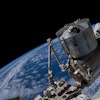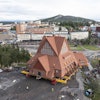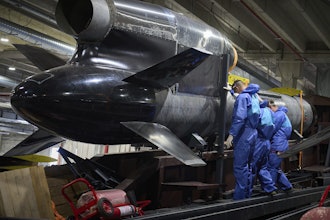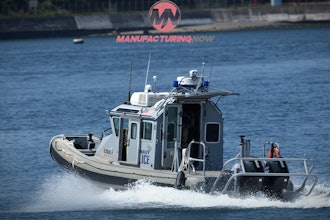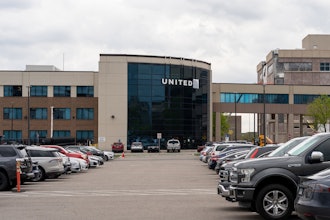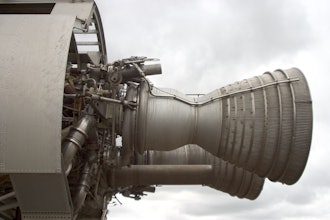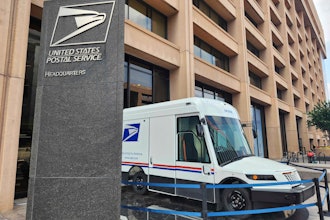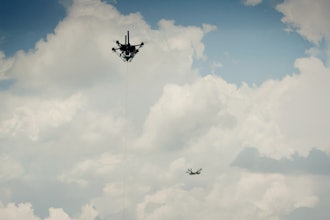
Visionary medical device, biotech, and lab companies are gearing up to supply new technologies for the next frontier: space travel. And, in some cases, dramatic medical breakthroughs have been achieved in space, which are having a profound effect here on Earth.
Medical researchers on Earth have been working on technologies that aim to control bleeding and facilitate surgery in space. According to George Patalos, Ph.D., a principal investigator for the Surgical Fluid Management System (SFMS) at the University of Louisville, "because of the microgravity environment, surgery and wound care in space have become very challenging."
The SFMS was put to the test in November 2022 with great results. The SFMS features a clear dome that creates a tight seal against a patient’s skin, providing insertion points for surgical instruments while preventing fluid escape. A multi-function surgical device (MFSD) performs several tasks in one wand-like instrument: suction, irrigation, illumination, vision, and cautery.
 A rendering of an International Space Station lab.Steute
A rendering of an International Space Station lab.Steute
Conversely, there have been medical breakthroughs that have been successfully launched into space. According to Healthcare Digital, an online medical publication, in a January 2023 article, the Top 10 medical breakthroughs made in space are:
- Breast Cancer Detection: An opportunity was spotted by the Canadian Space Agency in its space station robotic arm to be used successfully in breast cancer surgery on Earth.
- Vaccines: Space scientists researched Salmonella and how to combat its deadly bacterial pathogen in confined, low-gravity space.
- Water Purification: Research for ensuring astronauts have a supply of clean water has already been implemented in communities on Earth.
- NeuroArm: Based on a technology for the U.S. Space Shuttle Program, NeuroArm was created. It's a robot capable of performing surgery within MRI scanners.
- Ultrasound: The National Space Biomedical Research Institute built ultrasound technology, used by astronauts, that allows doctors in space to care for their fellow passengers without needing the help of doctors on Earth.
- Amgen: Researchers have carefully studied bone loss data, not only to support astronauts in space but also to aid patients on Earth.
- Shingles: Scientists from NASA and the University of Colorado teamed up to work together and find a cure. Together, they detected VZV DNA, which causes chickenpox. Now, detection of the virus can be completed in less than one hour.
- Improving Balance: NASA's preflight and postflight study of the eye movement reaction (EMR) has led to quicker and more affordable identification and treatment of balance problems.
- Relieving the Symptoms of Menopause: One of the most unpleasant symptoms of menopause is hot flashes. Retail company Fifty One Apparel manufactures clothing designed with specific materials to maintain temperature regulation, a feature already utilized in spacesuits.
- Eye Surgery: Aided by laser technology used in space, medical equipment manufacturer Alcon developed technology used by opticians on Earth to monitor a patient's eye and operate the laser scalpel
Large labs and equipment required for conducting clinical analyses here on Earth are not practical in a spaceflight setting. Instead, astronauts rely on smaller systems, such as WetLab2 (currently in operation on the International Space Station), to monitor signals of declining health.
The mandates to supply better Earth/Space technology are no less demanding for component suppliers like Steute, the world leader in medical-grade foot switches. Master Control of the Japanese Space Agency (JAXA) had a problem. The costs of astronauts controlling the Remote Manipulation System (RMS), which is part of the Japanese Experiment Module (JEM or "Kibo") on the International Space Station (ISS), were stratospheric. While some of these vitally important experiments required direct astronaut control from the ISS, the rest are more routine tasks that needed to be controlled, as much as possible, from Earth…which is 250 miles away!
 A schematic that shows the foot pedal connection to the robotic arm.Steute
A schematic that shows the foot pedal connection to the robotic arm.Steute
JAXA reached out to Steute to design a special technology that can go above and beyond in terms of robustness and reliability, as any signal failure could result in substantial damage by the RMS (due to the long travel time of the communication signals). Steute delivered meteoric results by creating a customized tandem of two foot switches: a three-pedal model and one with six pushbuttons.
 A photo of the Steute foot pedal and button pad on the International Space Station. Steute
A photo of the Steute foot pedal and button pad on the International Space Station. Steute
If you want to see the future of medical device technology, just look up in the sky!
